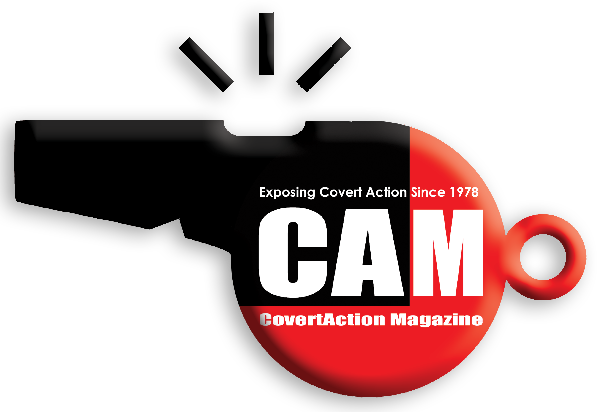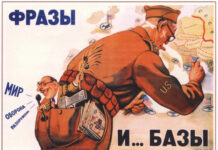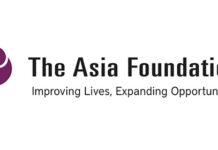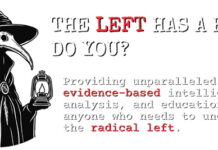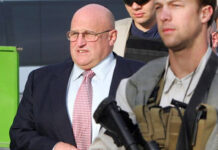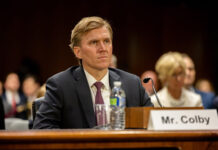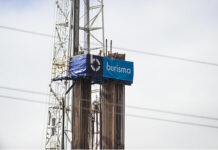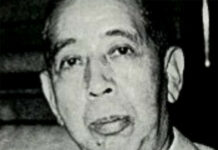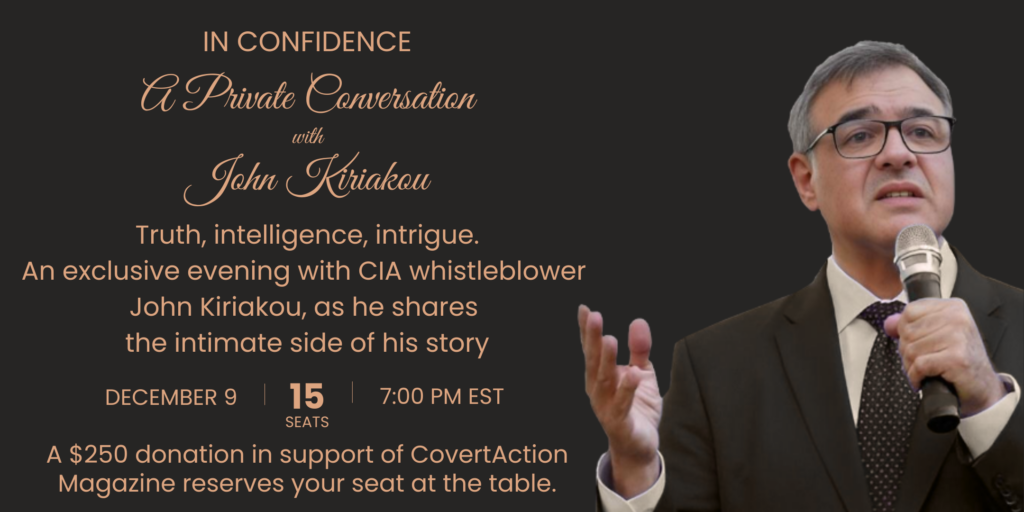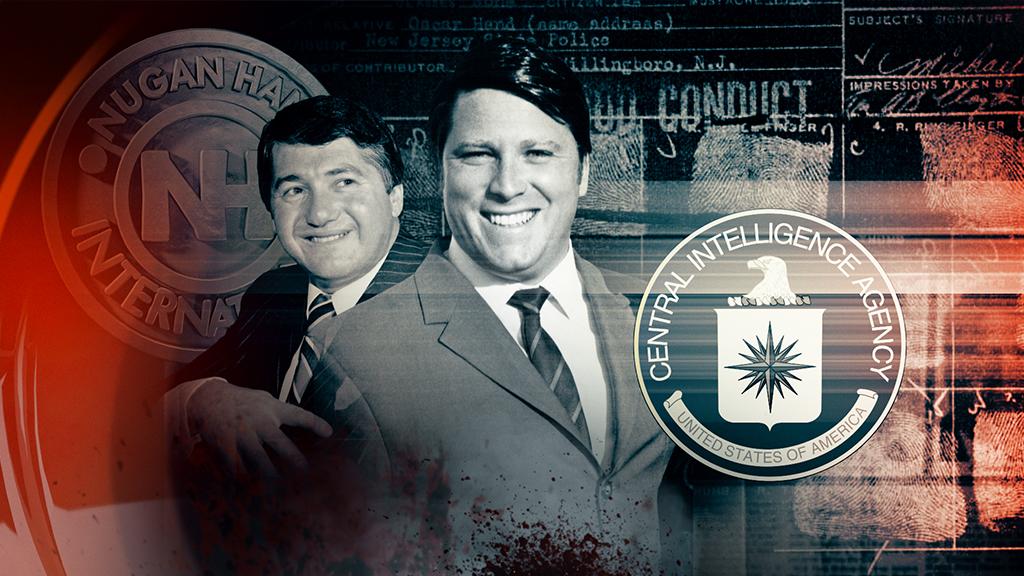
Danny Casolaro Was Planning to Meet with Key Figures in Nugan Hand Bank and Members of Australian Government Commission Before He Was Murdered
On August 10, 1991, Danny Casolaro was found lying dead in a tub of bloody water in a hotel room in Martinsburg, West Virginia.
The cause of death was ruled a suicide, the view presented in a recent Emmy winning Netflix series. However, the crime scene evidence makes clear that Casolaro was murdered.
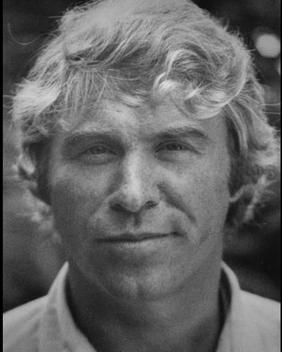
Prior to his death, Casolaro had been investigating the nefarious activities of a corrupt cabal in the CIA linked to then-President George H.W. Bush and was planning to publish a tell-all book called “The Octopus.”
One of the key chapters was going to focus on a drug and arms-smuggling operation using the Australian-based Nugan Hand Bank, which was founded in 1973 and staffed by people with military backgrounds and who had links at a high level with American intelligence operations.[1]
Nugan Hand made its money by charging high fees for performing illegal and shady services (including moving money overseas, flouting Australia’s and other countries’ laws, and tax avoidance schemes) and from the fraudulent procurement and subsequent misappropriation of investments from the public.[2]
CIA whistleblower Victor Marchetti wrote that Nugan Hand’s favors for the CIA included providing cover for operators, laundering money, and establishing cutouts for clandestine activity the Agency did not want to be publicly identified with—including gun running to apartheid South Africa and Southern Rhodesia in violation of arms embargos.[3]
Casolaro had been planning a trip to Australia to interview key figures associated with the bank, including Bernie Houghton, a top CIA man from Texas who joined Nugan Hand’s staff in 1978 and established its Saudi Arabian branch.[4]
An Air Force cadet in World War II who flew opium out of the Golden Triangle in C-47 cargo planes during the Vietnam War, Houghton had established the Bourbon & Beefsteak, a gathering place for U.S. soldiers on R&R from Vietnam, whose private guests included Sydney mob boss Abe Saffron and John D. Walker, the CIA’s Australian Station Chief from 1973 to 1975.[5]
Besides Houghton, Casolaro hoped to interview members of an Australian parliamentary commission that had investigated the Nugan Hand Bank and helped expose its criminal activities. Casolaro further intended to interview Nugan Hand Bank co-founder Michael Jon Hand, a decorated Green Beret in Vietnam and CIA contract agent who trained hill tribesmen in Vietnam and Laos and fled Australia after the Nugan Hand Bank’s collapse in January 1980.[6]
Already, Casolaro had amassed significant evidence of Nugan Hand’s function as a beachhead for drug and money-laundering operations run by Mafia-connected CIA operatives who were part of President George H.W. Bush’s “secret team.”
These CIA operatives included key figures in the Iran-Contra arms-drug-smuggling operations who had also coordinated drug-trafficking operations in the Golden Triangle region during the Indochina War: a) Theodore Shackley, the CIA Station chief in Vientiane, Laos during the Indochina War who had worked as a translator for Nazi spy chief Reinhard Gehlen after his recruitment into the CIA; b) Thomas Clines, who knew Hand from his days as CIA Chief of Station in Laos and oversaw the running of death squads in East Timor in the 1970s; and c) Richard Secord, another veteran of the secret war in Laos implicated in the Iran-Contra affair, who worked closely with Bernie Houghton.[7]
Other key CIA figures associated with the Nugan Hand Bank were:
- Paul Helliwell, CIA paymaster and Mafia liaison;
- Walt McDonald,[8] CIA Deputy Director of Economic Research and a CIA petroleum expert who was a sailing partner of John Paisley, the CIA’s top expert on Soviet military strength;
- William Colby, the CIA Director from 1973 to 1976 who had served as Nugan Hand’s Washington-based legal adviser.
Colby’s business card was found in the Mercedes-Benz of Nugan Hand Bank co-founder Frank Nugan on January 27, 1980, outside Lithgow, New South Wales, where Nugan was found shot with a .30 caliber rifle in an apparent murder that was made to look like a suicide.[9] At the time, Nugan—whose gun had been wiped clean of fingerprints—was facing charges of stock fraud.
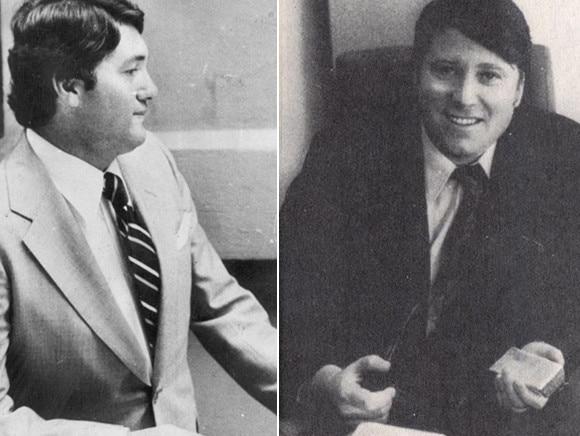
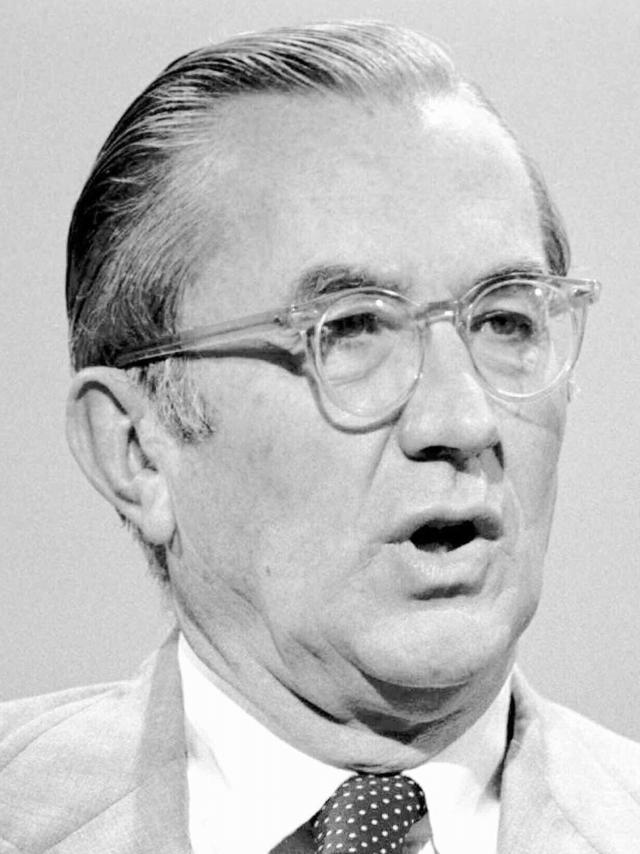
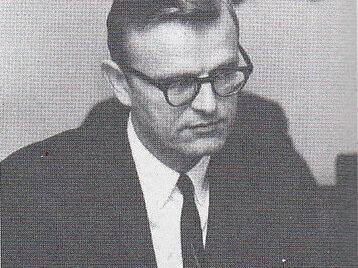
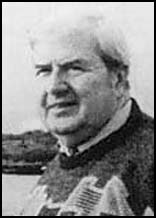
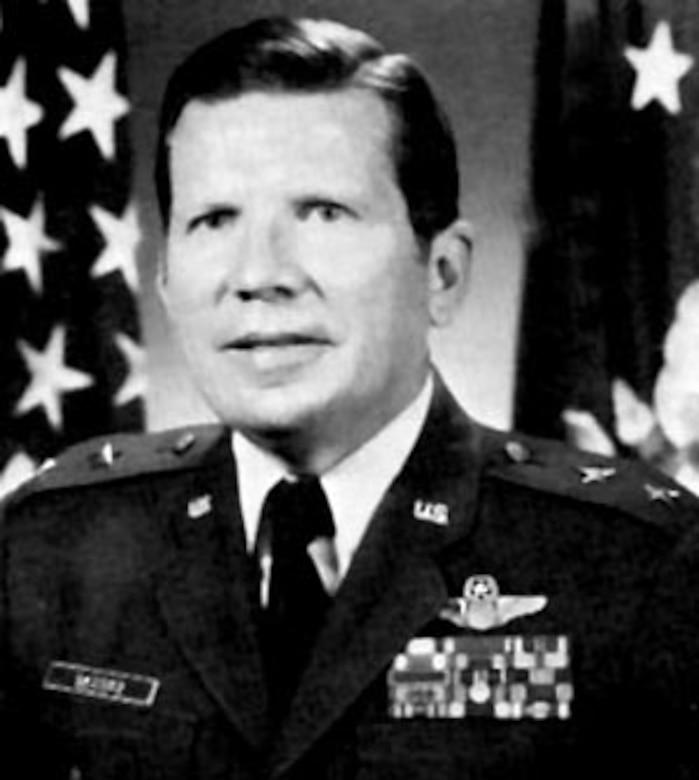
Merchants of Menace
New details about the Nugan Hand Bank were revealed in Peter Butt’s book, Merchants of Menace: The True Story of the Nugan Hand Bank Scandal, published in 2015.
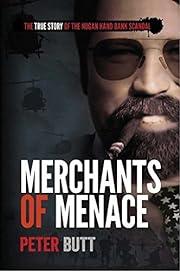
Butt is an investigative filmmaker whose research uncovered that the Nugan Hand Bank was involved with gun-running and money-laundering for drug traffickers, including ones that worked with the CIA, and that the bank was used as a paymaster for CIA black operations.
Butt quoted Neil Evans, an employee of the Nugan Bank office in Hong Kong, who said that money was deposited with the Nugan Hand Bank by the CIA and that Nugan Hand was the repository for funds coming from various CIA enterprises, including drugs in Thailand—marijuana in particular—and that the Nugan Hand Bank rerouted that money to the account of a Bank in New York.
Michael Hand had told Evans that he and Houghton were actively working for the CIA, whom Evans described as “the heaviest people on Earth; life was ultra-cheap to them.”[10]
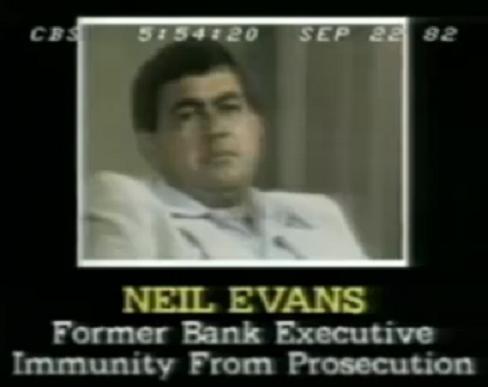
Hand’s CIA-related activities with Nugan Hand Bank included arms-trading deals to U.S. intelligence-supported forces in Angola and his serving as a liaison to Khun Sa, a drug kingpin in the Golden Triangle, who had a reciprocal arrangement by which he sold heroin to U.S. intelligence operatives who supplied him with arms.
Andrew Lowe, who acted as a translator at meetings between Hand and Khun Sa, claimed that Hand had boasted to Khun Sa about working for the CIA in Laos during the Vietnam War and how heroin was shipped out of Laos hidden in the bodies of dead American servicemen. Lowe said that the outcome of Hand’s meeting with Khun Sa was their development of a plan to import 500 pounds (225 kg) of heroin from Bangkok to the U.S., which Hand was to help arrange.
In 1973, Federal Bureau of Narcotics (FBN) Agent Phil Bailey had received a phone call from a Sydney lawyer who said that four Americans—including Hand and an Air America pilot named Bud King—were involved in a drug-smuggling ring.
Bailey’s subsequent investigation revealed that the Nugan Hand Bank had explicitly opened a branch in Chiang Mai, the heroin capital of the Golden Triangle, to attract drug money, and that bank employees involved in laundering drug money socialized with CIA Station Chief for Thailand Red Jantzen, a friend of Nugan Hand Bank President Admiral Earl “Buddy” Yates, who was offered a job at Nugan Hand Bank.[11]
Butt quoted from Australian parliamentary investigations which uncovered that the Nugan Hand Bank had laundered money for as many as 40 drug-trafficking syndicates, including a major one in Asia headed by Terrance J. Clark.
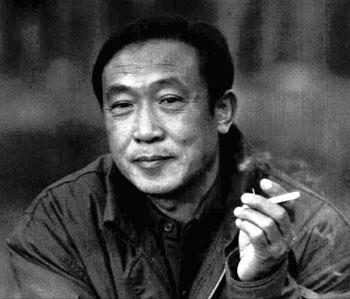
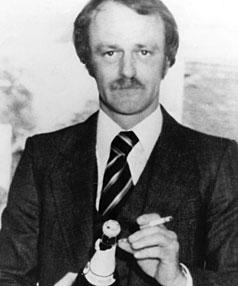
One of Nugan Hand’s favored clients was the Shah of Iran, a U.S. proxy installed in a 1953 CIA coup, who deposited $100 billion that he had stolen from Iranian oil companies in the bank’s Cayman Islands Branch.[12]
The Costigan Commission—an Australian commission headed by lawyer Frank Costigan—found that Nugan Hand had helped the Shah further by facilitating the sale of a U.S. Navy spy ship to the Shah’s regime as it was in the grip of an Islamic revolution.
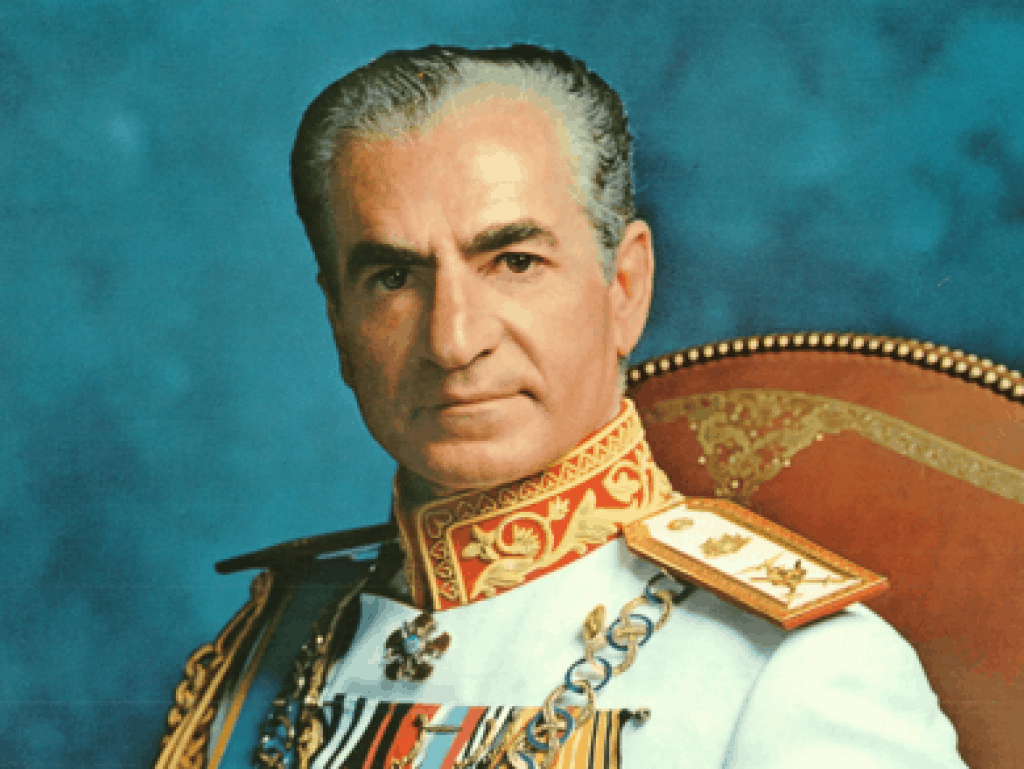
Another favored client was CIA operative Edwin Wilson, to whom the bank offered a $22 million line of credit for weapons-smuggling operations that Wilson ran into Libya with the assistance of Patry E. Loomis, a key liaison between Nugan Hand and the CIA.
The Costigan Commission found that Wilson supplied weapons and ammunition in 1975-1976 to Michael Hand in Africa, which were provided to rebels backed by the CIA in Angola.
It further found that Wilson had association with an Australian pilot connected to the Nugan Hand Bank, Christopher Brading, who had also been a pilot for the CIA’s Air America airline during the Indochina Wars, and that Wilson was involved in arms smuggling with a Melbourne businessman associated with Nugan Hand.[13]
Wilson told Daniel Sheehan, a lawyer with the Christic Institute which investigated CIA corruption, that Nugan Hand Bank was founded after CIA agents Carl E. Jenkins and Richard Secord had brought suitcases filled with cash from Laos to start the bank.
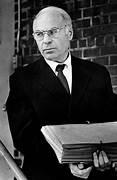
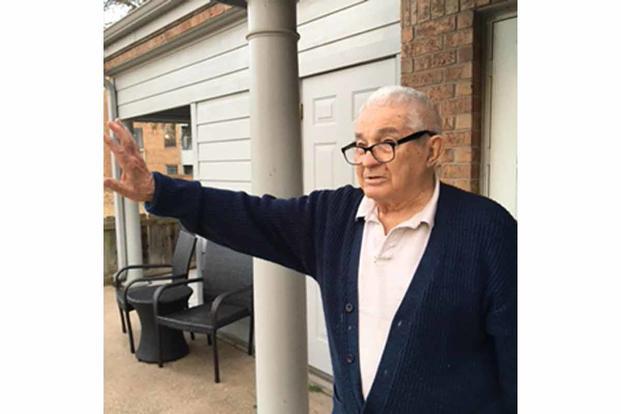
The money came from drug-trafficking operations out of the Golden Triangle run by General Vang Pao, the head of the CIA’s clandestine Hmong army, which was mobilized to fight against the Communist Pathet Lao.[14]
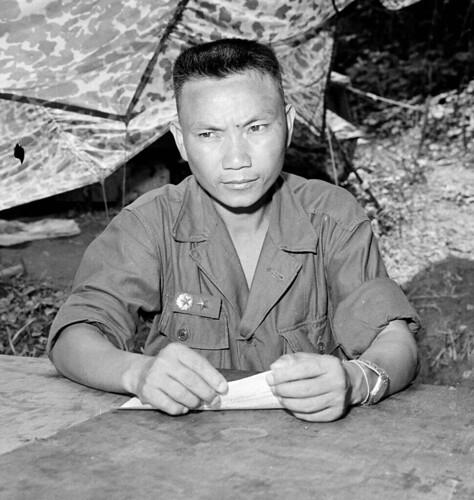
According to Sheeham, Theodore Shackley played a key role in setting up the Nugan Hand bank not only to launder drug profits from the Golden Triangle but also as a means of financing the Phoenix Operation, a terrorist program resulting in the death of over 20,000 Vietnamese.[15]
Doug Sapper, a Vietnam Special Forces veteran who helped Nugan Hand set up its Chiang Mai office, said that Nugan Hand Bank was “the conduit bank for the CIA for both moving money in, and moving it around for somebody that they wanted in their pocket, including despotic dictators.” Asked why the U.S. government would want to support the latter, Sapper replied: “I’ll tell you why—because when you’ve got their money, you’ve got their balls. You own them.”[16]
On December 7, 1982, an undisclosed source advised an Australian Joint Task Force that Hand was employed as a U.S. military adviser to Honduras’s elite Puma Battalion, which fought in Nicaragua against the socialist Sandinistas that the Reagan administration sought to undermine. Butt writes that, “for Hand to slot back into such a role suggests that he had never ceased his association with the CIA.”[17]
Twenty-five years later, Butt tracked Hand to Idaho Falls, a small city in Idaho with a population of 67,000 where he ran a company that manufactured knives and other tactical weapons used by Special Operations forces, SWAT teams and law enforcement agencies.[18]
Hand was easy to track down because he was using the same social security number that he had always had. This indicates that he was a protected CIA asset who could have easily been prosecuted for his crimes while at Nugan Hand Bank or extradited to Australia if there were a will to do so.
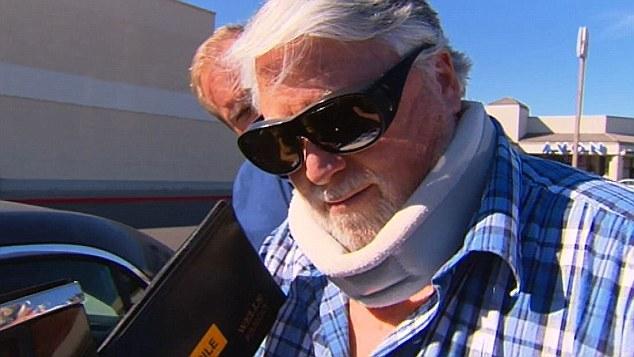
Butt emphasizes at the end of his book the corrupting influence of Nugan Hand Bank in Australia.
An Australian Supreme Court Judge said that Nugan Hand’s support for the drug trade in Australia led to “an enormous change in direction for Australia once you deal with the transport of money for drugs. Once you are dealing with corrupt governments and the CIA, then Australia is in a new league. At the time, I don’t think people quite realized what was involved because the CIA were the good guys and we were mates of America and all of that. This was a change of direction from which we could never go back. The penny ante organized crime was nothing compared to this.”[19]
Investigation by Peter Osborne
Peter Osborne is a former science adviser to the Australian government who picked up on Danny Casolaro’s investigation into Nugan Hand and other operations of the “secret team” after his encryption venture, established with the Australian government and UN, was destroyed in the CIA’s Operation Stillpoint because it had an encryption key that the National Security Agency (NSA) could not infiltrate.
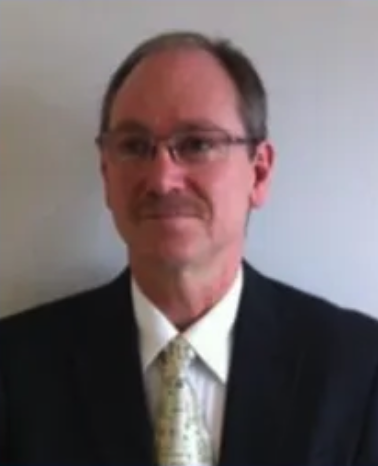
Osborne has produced a podcast, “The CIA and Mafia’s Partnership with Nugan Hand Bank” and several follow-ups, which detailed Nugan Hand’s use of Australia as a base to bring drugs produced in the Golden Triangle into the U.S.
Osborne interviewed Michael Riconosciuto, a CIA whistleblower, who told him that Barry Smith, an associate of Robert Booth Nichols, a CIA-Mafia figure[20] and chairman of the Meridian Arms Corporation, found through research into interlocking directorates a deep connection between Nugan Hand Bank and Wackenhut, a private security company founded by an ex-FBI agent that carried out covert operations for the CIA.
Bobby Ray Inman, the CIA Deputy Director in 1981-1982 was a director of Wackenhut along with Frank Carlucci, Deputy Director of Intelligence under Jimmy Carter and Defense Secretary under Ronald Reagan.[21]
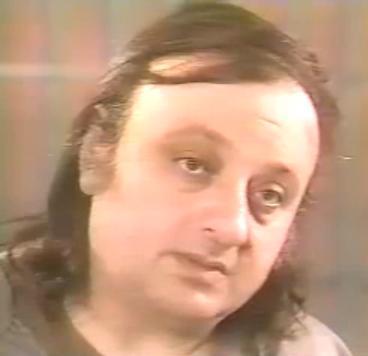
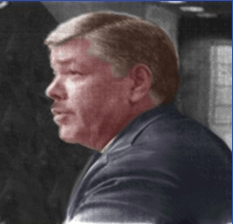
Smith also found that Paul Morasca, a Gambino crime family money launderer who was found hogtied and fatally strangled in his swanky San Francisco condo in 1982, held the secret covert international account numbers of the Nugan Hand Bank containing hundreds of millions in drug money for Michael Hand. Morasca worked with Hand to move funds from the Nugan Hand Bank that were to be used in covert operations by the CIA’s secret team.[22]
Morasca’s operation was run out of the Cabazon casino in Riverside, California—owned by Thomas Marson of the Gambino Mafia and CIA officer Dr. John P. Nichols. This is where Riconosciuto had modified PROMIS software that was used by the CIA to create the SWIFT banking system that could allow for monitoring of all banking transactions and efficient money laundering.
Michael Hand’s Mafia associates included Harry Wainwright, a fugitive American lawyer who coordinated a large-scale marijuana-smuggling plot out of Australia, and Murray Stewart Riley,[23] who used the Nugan Hand Bank to launder funds. An Olympic rower who became a large-scale drug trafficker after he was implicated in a police corruption scandal, Riley was found with Hand’s Hong Kong phone number when he was arrested by police.[24]
Australian police investigations after the Nugan Hand Bank’s collapse in 1980 uncovered telexes indicating dealings between Hand and Henry Eugene Bartholomeusz, a Sydney shipping executive who was arrested and charged by Drug Enforcement Administration (DEA) in 1974 with smuggling $4 million worth of heroin into the U.S. from Thailand.
After his arrest, Bartholomeusz was released from custody and went back to Australia where he established the country’s largest arms business. Among other things, it sold Cobra helicopters, minesweepers, Exocet missiles and enriched uranium for use in atomic weapons as well as atomic bombs, which Bartholomeusz sold to the Saudis.
Osborne believes that Bartholomeusz ran a huge CIA arms and drug-trafficking network out of Australia, though a police detective remembered Bartholomeusz as ”not a very good con-man.”
Australia’s Costigan Commission concluded that Australia was being used as a staging post for the movement of illegal cargo on the international market, with shipments of drugs from Australia having much less chance of being checked at a U.S. port than if they came from Asia or the Middle East. Another commission, headed by Judge Carlo Palermo in Italy, concluded that the CIA was involved in carrying out illicit drug- and arms-trafficking using Australia as a base.[25]
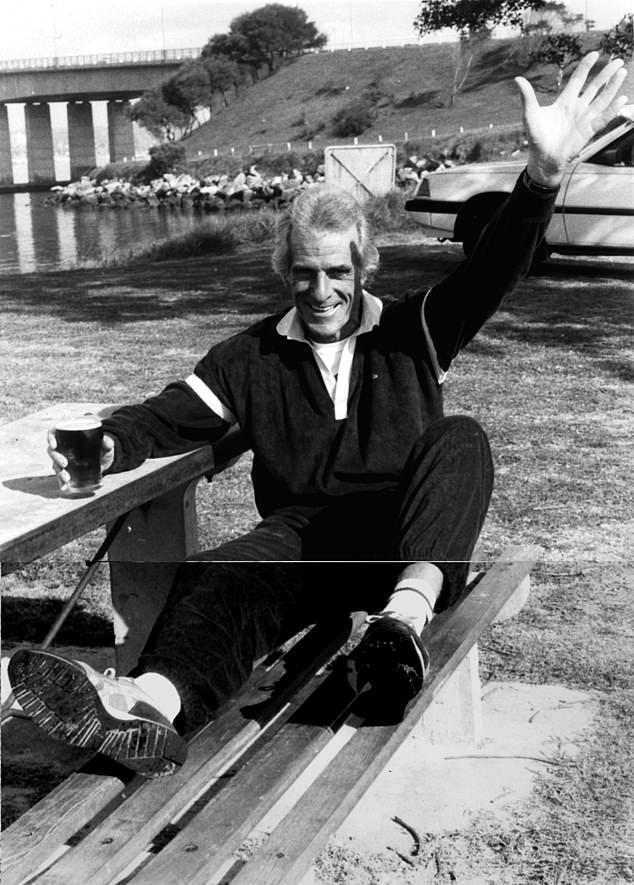
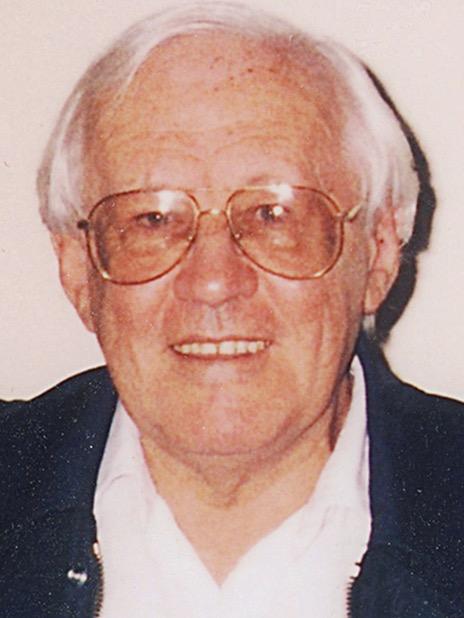
The CIA refused to cooperate with the Costigan and other Australian government commissions and, ultimately, had the Costigan Commission shut down.[26]
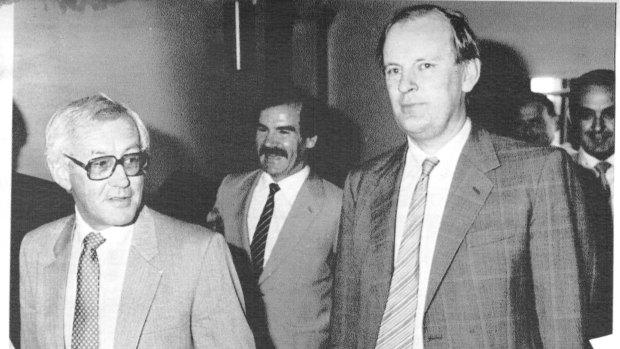
Osborne interviewed Desiree “Dee” Carone-Ferdinand, the daughter of CIA-Mafia liaison Colonel Albert V. Carone, who said that her father knew both Frank Nugan and Michael Hand and used the Nugan Hand Bank to launder money with General Leroy J. Manor, chief of staff for the U.S. Pacific Command and a U.S. government liaison with Philippines President Ferdinand Marcos, General Richard G. Stillwell and Paul Helliwell, for black operations not sanctioned by the U.S. government, including those financed through the drug trade.
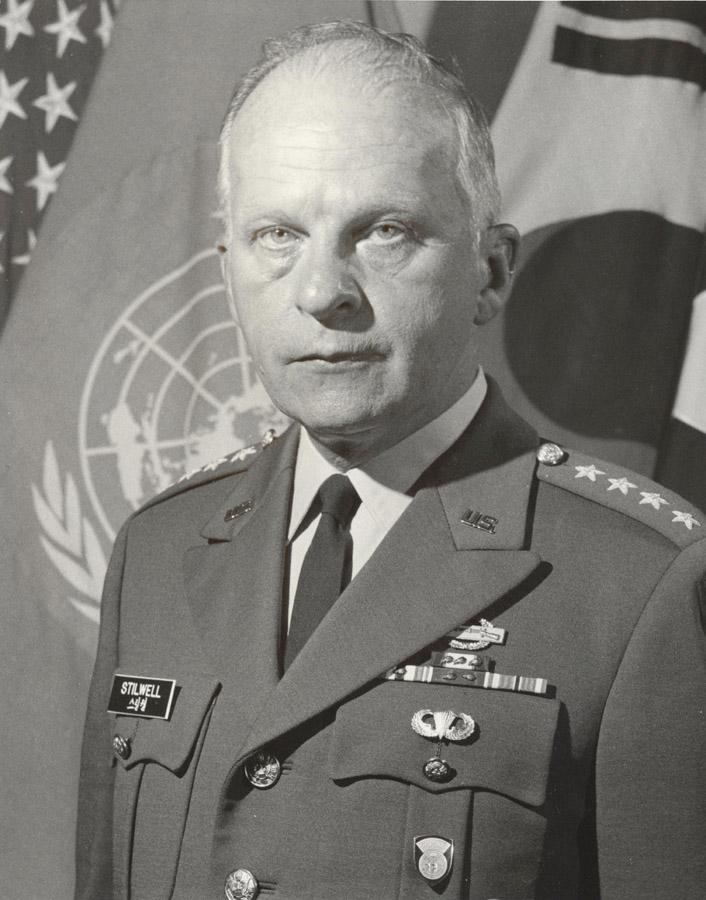
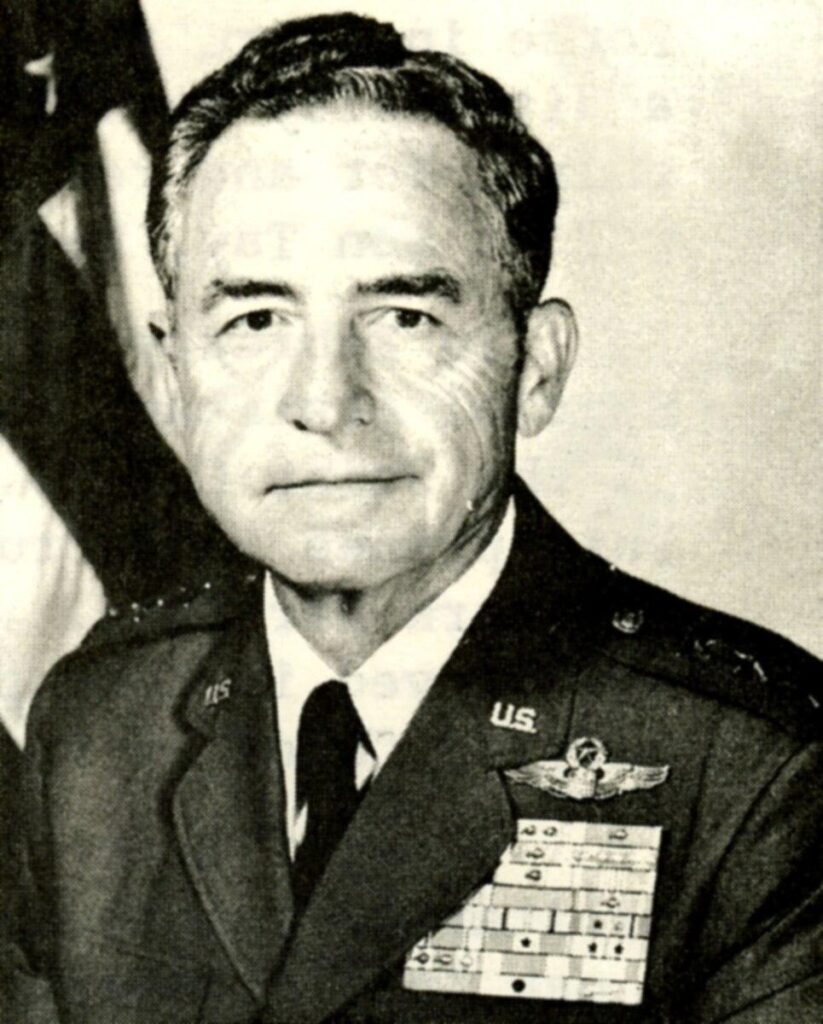
Osborne further reported that the head of Nugan Hand’s Washington, D.C., branch, General Erle Cocke, Jr., a former head of the American Legion and special consultant to Iran-Contra arms smuggler Adnan Khashoggi, gave a deposition to the New York District Court ten days before his death from pancreatic cancer in April 2000 during which he admitted involvement in clandestine banking operations for the U.S. government.
These operations included Project Hammer, a continuation of the operations of the Nugan Hand Bank, which siphoned billions of dollars derived from illegal arms and drug trading and other operations so the funds could be diverted into covert military operations.
Project Hammer additionally generated funds to pay off debts on bullion certificates issued by certain metal trusts and to rescue numerous major U.S. and international banks that were teetering on the brink of bankruptcy in the late 1980s.[27]
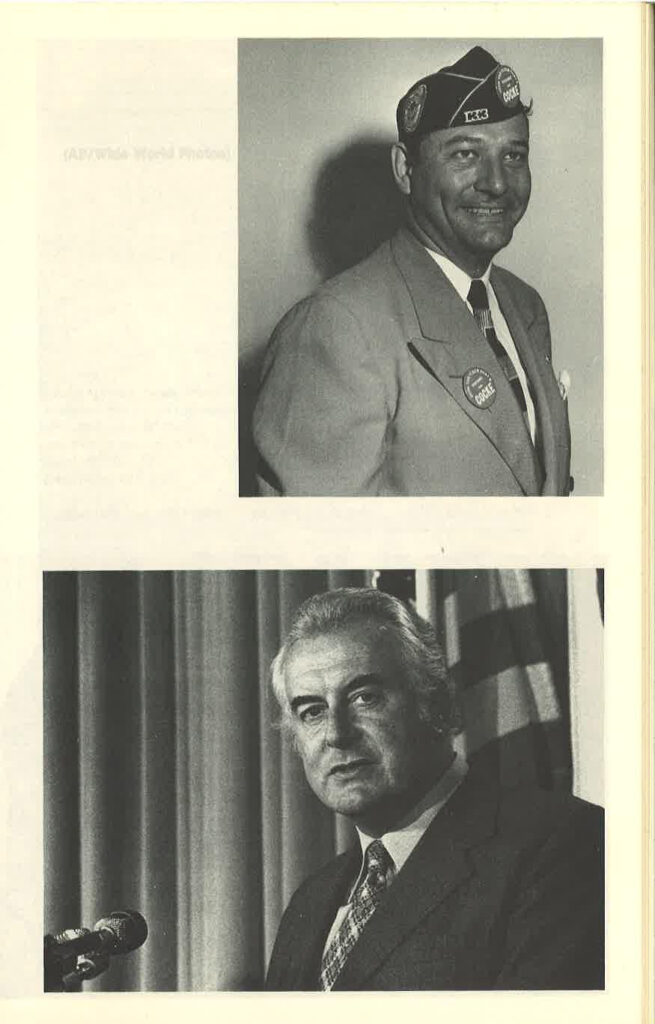
According to Osborne, the Nugan Hand Bank owned gold mining companies—Recovery Technologies Inc. (Gold and Precious Metals Mining in Australia), Southern Goldfields, Mining Resources, and Cooper Creek Mining and Exploration—through a sophisticated financial arrangement coordinated in part by Peter Briggs, a Perth businessman with CIA connections. Briggs had purchased some of the companies from Sydney crime boss Abe Saffron and hired as a solicitor John Aston, who was involved with the Nugan Hand Bank and Terrance Clark (aka Mr. Asia)’s drug syndicate.
The gold-mining companies brought gold into Australia that had been mined in Utah and were used as a front for the Nugan Hand Bank and CIA and their associated organized crime networks to launder money from the smuggling of precious metals and gold bullion.
Project Hammer was overseen by A.B. Krongard, Executive Director of the CIA from 2001 to 2004, CIA liaison with Blackwater and Vice Chairman of Bankers Trust, which is where Philippines dictator Ferdinand Marcos had deposited 50 tons of gold bullion that he had stolen from the Japanese at the end of World War II.[28]
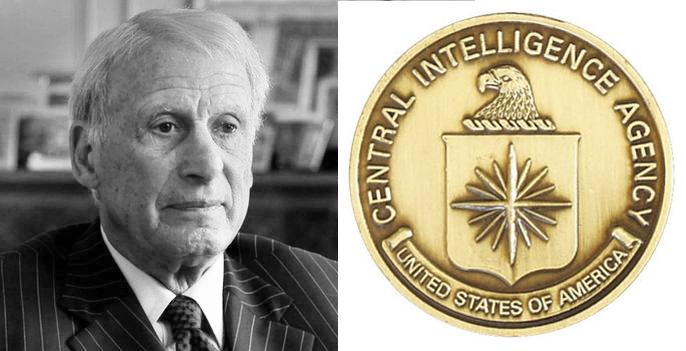
Nugan Hand was used by Marcos to secretly launder his gold bullion, which was secretly flown into the Pine Gap spy base in Western Australia run by the NSA.
The head of the Nugan Hand Bank’s Philippine branch, LeRoy J. Manor, who had been a liaison to Marcos,[29] was a key figure in the operation along with Robert Booth Nichols, who represented $1 billion gold bullion certificates in Switzerland owned by Marcos.
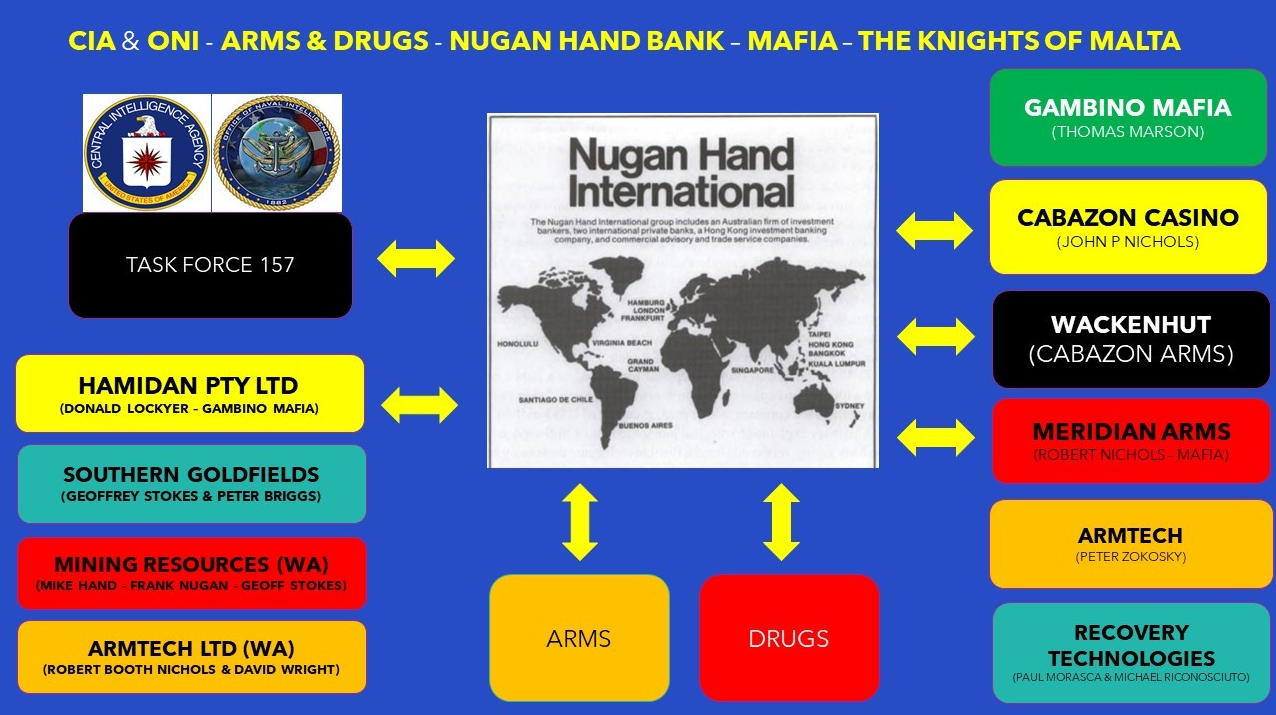
At one point, Nichols threatened Osborne’s life, warning him that his investigations were upsetting powerful neoconservatives in Washington. Nichols was also involved in training Osama bin Laden, according to Osborne.
Secret Criminal History
The history of the Nugan Hand Bank offers a window into the corrupt, secret history of the CIA and its involvement in systemic criminal activity as an adjunct of organized crime.
Through its representatives in the media and Hollywood, the CIA has done a great job in covering up the truth about its past and presenting itself before the American public as a heroic organization devoted to protecting American national security and rooting out evil in the world.
However, it is the CIA that has carried out evil deeds under the false veneer of protecting national security and which has routinely violated U.S. and international law.
Sadly, only two persons associated with the Nugan Hand Bank were ever prosecuted for any crimes—a secretary, Patricia Swan, and a lawyer, Michael Maloney, who was charged with conspiring with Michael Hand in the willful destruction of the Bank’s records.
But Hand has never gone to jail and has prospered as a manufacturer of tactical weaponry for Special Forces officers for the last four decades.
He is one of the protected species of Agency operatives who can commit among the worst crimes imaginable with impunity—while others rot for years in jail for far less offenses in a two-tiered justice system whose hypocrisy knows no bounds.
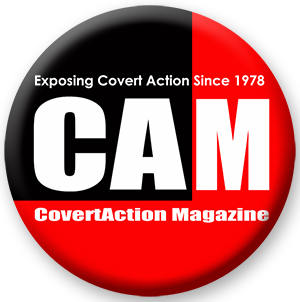
See Nancy Grodin, “The Australian Connection: Nugan Hand, the CIA’s Bank,” CovertAction Information Bulletin, No. 16, March 1982, 52, 53. https://covertactionmagazine.com/wp-content/uploads/2020/01/CAIB16-1982-1.pdf; Jonathan Kwitny, The Crimes of Patriots: A True Tale of Dope, Dirty Money and the CIA (New York: W.W. Norton, 1987). These men included: a) General Edwin F. Black, an Office of Strategic Services (OSS) operative and close colleague of CIA Director Allen Dulles, who commanded U.S. forces in Thailand and Vietnam in the late 1950s and 1960s and was active in anti-China undercover operations in China. He ran Nugan Hand Bank’s Hawaii office; b) Rear Admiral Earl “Buddy” Yates, commanding officer of the USS John F. Kennedy and an aide to the U.S. Secretary of the Navy, who worked with William Colby on the American Committee for a Free Vietnam. He was appointed president of the Nugan Hand Bank; c) Dale Holmgren a former flight services manager in Thailand for the CIA-run Civil Air Transport (CAT), who ran the Nugan Hand Taiwan office; d) LeRoy J. Manor, a CIA consultant and decorated Air Force pilot who was chief of staff for the U.S. Pacific Command and a U.S. government liaison with Philippines President Ferdinand Marcos, who ran the Nugan Hand Bank’s Philippines office; e) Admiral Lloyd Vasey, former head of U.S. Naval intelligence in the Pacific who ran the Nugan Hand Bank’s Hawaii office for a period; f) Guy J. Pauker, a RAND Corporation analyst and CIA operative who helped coordinate the 1965 right-wing coup in Indonesia and helped Nugan Hand get involved in the Indonesian oil business as a bank consultant; and g) CIA paramilitary officers William and Gordon Young, who worked briefly for Nugan Hand Bank. At least one person closely connected to Nugan Hand was also a member of the Australian Security Intelligence Organization (ASIO). ↑
Kwitny, The Crimes of Patriots, 94, 145. According to Kwitny, taking bribes was a specialty of Nugan Hand. ↑
Kwitny, The Crimes of Patriots, 121; Victor Marchetti and Jonathan Marks, The CIA and the Cult of Intelligence (New York: Alfred A. Knopf, 1974). ↑
In 1975, Houghton flew to Washington, D.C., with two Nugan Hand Bank employees as part of supporting Michael Jon Hand’s efforts to arrange arms deals supplying weapons to groups in apartheid South Africa in violation of an arms embargo. As part of the venture, Houghton made direct contact with Edwin P. Wilson who was then working for the Office of Naval Intelligence (ONI). In 1976, Houghton joined the Bank’s staff following the bankruptcy of his bar business, with debts of nearly $1 million. He recruited an old friend, Admiral Earl Yates, to be the bank’s president. Houghton had always been close with Richard Secord, who introduced him to other members of the “secret team,” notably Theodore Shackley and Thomas G. Clines, with whom he arranged a deal to sell Philippine jeeps to Egypt. ↑
Kwitny, The Crimes of Patriots, 57, 59, 60, 61. Kwitny described Houghton as a “fleshy, gray-haired, outwardly unobtrusive man with eye-glasses” who seemed to “pride himself on a quiet demeanor.” He was born in Texas on July 25, 1920, to an oil driller and attended Southern Methodist University before enlisting in the Army during World War II, and then went to Vietnam early in the 1960s working, he said, in the construction of military bases. His intelligence contacts included Harry “Heinie” Aderholt, a key figure in the Iran-Contra affair and Willis Bird, who had run arms and drug-smuggling operations for the CIA in Thailand under the cover of a private company, Sea Supply. ↑
Hand won a Silver Star, Purple Heart, and Distinguished Service Cross, second only to the Congressional Medal of Honor as the nation’s highest military award, in Vietnam. On June 9, 1965, according to the Distinguished Service Cross citation, he almost single-handedly held off a 14-hour Vietcong attack on the Special Forces compound of Dong Xaoi. Kwitny, The Crimes of Patriots, 54. ↑
The godfather of the secret team was Edward Lansdale, an OSS propaganda writer who had helped oversee the theft of buried Japanese gold that was used to create CIA black funds and ran Filipino assassination squads that murdered enemies of the CIA across Southeast Asia. ↑
McDonald was introduced to Frank Nugan by Guy J. Pauker. Grodin, “The Australian Connection,” 53. ↑
Peter Butt, Merchants of Menace: The True Story of the Nugan Hand Bank Scandal (Sydney: Blackwattle Press, 2015). ↑
Evans’s claims were corroborated by former CIA agent Kevin Mulcahey who worked for CIA operative Edwin P. Wilson. He stated that the CIA had used Nugan Hand Bank for shifting around the bank’s money for various covert operations across the globe. ↑
Yates, a close friend of Frank Nugan, was made President of Murdoch Lewis Proprietary Ltd., a company set up to move arms into apartheid South Africa. A Nugan Hand Bank employee, Ron Pulger-Frame, would pick up cash deposits from Chiang Mai and carry them on commercial flights to Hong Kong or Singapore, with his skill being moving money through Customs by paying bribes if necessary. ↑
This money was later stolen by Nugan Hand employees when the bank collapsed. ↑
Peter Osborne reported that, in 1977, there was a meeting of four officials from the Nugan Hand Bank and Wilson held in Bangkok. In the course of the meeting, Wilson said he was involved in an arms deal with Saudi Arabia and wanted the Nugan Hand Bank to finance the deal. One of the officials at the meeting said in July 1977 that the deal, involving $200 million, “had been completed.” ↑
Sheehan interviewed Wilson while he was being held three floors underground at Marion Prison in Illinois. Danny Sheehan, testimony in front of the author, December 15, 2023. Ted Shackley played a key role in coordinating drug smuggling from the Golden Triangle with Richard Armitage who handled a lot of the financial end. According to Michael Riconosciuto, as recounted by Peter Osborne, organs were removed from American GIs and drugs were then stuffed into their body cavities and smuggled in the coffins of the dead GIs in a ring overseen by the Gambino crime mafia and Santo Trafficante in collaboration with the CIA and General Vang Pao. ↑
Author interview with Daniel Sheehan, “Uncontrolled Opposition” podcast, September 26, 2025. ↑
Butt, Merchants of Menace, 240. ↑
Butt, Merchants of Menace, 261. ↑
Idem. ↑
Idem. ↑
Edward Sciandra, underboss of the Buffalino crime family, described Robert Booth Nichols as his “government man.” The Meridian Arms Corporation was centrally involved in smuggling operations in Iran-Contra. The Vice President of the Meridian Arms Corporation, David Stanley, lived across the street from Ronald Reagan. First International Development Corporation (FIDCO), a National Security Council subsidiary run by two CIA operatives (George Pender and Robert Maheu) owned shares in Meridian Arms Corporation. ↑
As the Second Secretary in the U.S. Embassy in the Congo during the brief time that Patrice Lumumba served as prime minister before being assassinated, Carlucci was intimately involved in the U.S. efforts to overthrow the Lumumba government. ↑
According to Peter Osborne, Michael Riconosciuto believes that Morasca was murdered by a CIA hitman named Phillip Arthur Thompson who had worked for Wackenhut and had a security clearance despite a long criminal career that included weapons charges, kidnapping and murder. Thompson worked for John P. Nichols at the Cabazon casino and helped supply weapons to the Nicaraguan Contras. ↑
Riley was an associate of leading figures in the American Mafia, such as Jimmy Fratianno of the Los Angeles crime family and Michael Rudy Tham, a corrupt Teamsters official. ↑
Grodin, “The Australian Connection,” 54; Kwitny, The Crimes of Patriots, 229. Riley won a bronze medal in rowing at the 1956 Olympics. Paul Hayward, one of Sydney’s biggest heroin dealers, was one of Nugan Hand Bank’s biggest customers. Another customer, Laotian Prince Panya Phouma, son of Laotian politician Souvanna Phouma, was implicated in the Lao heroin trade. Andrew Lowe was one of Australia’s leading heroin importers who was actually on Nugan Hand Bank’s staff. Other known drug traffickers who deposited money in Nugan Hand Bank included: James Lewis Williams, George Chakiro, Malcolm Craig Ladd, Charles Robertson Beveridge, Barry Graeme Chittem, Murray Don Newman, Bruce Alan Smithers, James Sweetman, and George Shamoun. ↑
The Nugan Hand Bank was linked to arms sales to non-government rebel groups such as the Irish Republican Army (IRA), Palestine Liberation Organization (PLO), Fretilin (East Timor independence movement) and Croatian Ustashe, along with governments like Iraq, Iran and Argentina at the height of the Falkland Islands/Malvinas crisis. The arms network flourished because of corruption in Australian police forces. Some of the guns were smuggled in expensive funeral caskets. ↑
Australian Foreign Minister Bill Hayden of the Labor Party, as opposition leader, rejected subsequent assurances from then-U.S. Vice President George H.W. Bush that the CIA had not interfered in Australian politics or been involved in the Nugan Hand Bank. The Deputy Leader of the Australian Labor Party, Lionel Bowen, said in November 1982 that “finding out if intelligence agencies had been more interested in crime than intelligence was a serious question.” ↑
A decorated World War II veteran who survived an SS Gestapo execution squad after being left for dead, Cocke, who received an MBA degree from Harvard, was an aide to Secretary of State George Marshall and Secretary of Defense Robert Lovett during the early Cold War. His extreme right-wing views were evident in his calls for the expulsion of the Soviet Union from the United Nations and support for General Douglas MacArthur’s demand to bomb China during the Korean War and open a second front against China from Taiwan. In 1959, Cocke, who was a friend of Jimmy Carter, was appointed a U.S. delegate to the United Nations General Assembly by President Dwight D. Eisenhower in 1959, and in the 1960s, he held a position in the International Bank for Reconstruction and Development. Cocke was also named an honorary commander of the Nationalist Chinese Air Force. In 1964 and 1966, Cocke ran unsuccessfully for the Democratic nomination for a seat in the United States House of Representatives to represent Georgia’s 3rd Congressional District. See Eric Pace, “Erle Cocke Jr., 78, War Hero Who Led American Legion,” The New York Times, April 26, 2000, https://www.nytimes.com/2000/04/26/us/erle-cocke-jr-78-war-hero-who-led-american-legion.html; Kwitny, The Crimes of Patriots, 41. ↑
The CIA had also stolen some of the gold under the oversight of Edward Lansdale, an OSS propagandist appointed as a liaison to a Filipino-American commando named Severino Garcia Diaz Santa Romana, who found the gold hidden in vaults in the Philippines after torturing the personal driver of Japanese General Tomoyuki Yamashita who revealed its whereabouts. See Sterling and Peggy Seagrave, Gold Warriors: America’s Secret Recovery of Yamashita’s Gold (London: Verso, 2005). ↑
Kwitny, The Crimes of Patriots, 13. The Nugan Hand office in Manila was, interestingly, located in the Ramon Magsaysay Center. Magsaysay was a Philippines president installed in the 1950s by the CIA who was advised by Edward Lansdale. The adjacent suite was occupied by the United States Agency for International Development (USAID) and other nearby offices included the Drug Enforcement Administration (DEA). (p. 187). ↑
CovertAction Magazine is made possible by subscriptions, orders and donations from readers like you.
Blow the Whistle on U.S. Imperialism
Click the whistle and donate
When you donate to CovertAction Magazine, you are supporting investigative journalism. Your contributions go directly to supporting the development, production, editing, and dissemination of the Magazine.
CovertAction Magazine does not receive corporate or government sponsorship. Yet, we hold a steadfast commitment to providing compensation for writers, editorial and technical support. Your support helps facilitate this compensation as well as increase the caliber of this work.
Please make a donation by clicking on the donate logo above and enter the amount and your credit or debit card information.
CovertAction Institute, Inc. (CAI) is a 501(c)(3) non-profit organization and your gift is tax-deductible for federal income purposes. CAI’s tax-exempt ID number is 87-2461683.
We sincerely thank you for your support.
Disclaimer: The contents of this article are the sole responsibility of the author(s). CovertAction Institute, Inc. (CAI), including its Board of Directors (BD), Editorial Board (EB), Advisory Board (AB), staff, volunteers and its projects (including CovertAction Magazine) are not responsible for any inaccurate or incorrect statement in this article. This article also does not necessarily represent the views the BD, the EB, the AB, staff, volunteers, or any members of its projects.
Differing viewpoints: CAM publishes articles with differing viewpoints in an effort to nurture vibrant debate and thoughtful critical analysis. Feel free to comment on the articles in the comment section and/or send your letters to the Editors, which we will publish in the Letters column.
Copyrighted Material: This web site may contain copyrighted material the use of which has not always been specifically authorized by the copyright owner. As a not-for-profit charitable organization incorporated in the State of New York, we are making such material available in an effort to advance the understanding of humanity’s problems and hopefully to help find solutions for those problems. We believe this constitutes a ‘fair use’ of any such copyrighted material as provided for in section 107 of the US Copyright Law. You can read more about ‘fair use’ and US Copyright Law at the Legal Information Institute of Cornell Law School.
Republishing: CovertAction Magazine (CAM) grants permission to cross-post CAM articles on not-for-profit community internet sites as long as the source is acknowledged together with a hyperlink to the original CovertAction Magazine article. Also, kindly let us know at info@CovertActionMagazine.com. For publication of CAM articles in print or other forms including commercial internet sites, contact: info@CovertActionMagazine.com.
By using this site, you agree to these terms above.
About the Author

Jeremy Kuzmarov holds a Ph.D. in American history from Brandeis University and has taught at numerous colleges across the United States. He is regularly sought out as an expert on U.S. history and politics for radio and TV programs and co-hosts a radio show on New York Public Radio and on Progressive Radio News Network called “Uncontrolled Opposition.”
He is Managing Editor of CovertAction Magazine and is the author of six books on U.S. foreign policy, including Obama’s Unending Wars (Clarity Press, 2019), The Russians Are Coming, Again, with John Marciano (Monthly Review Press, 2018), Warmonger. How Clinton’s Malign Foreign Policy Launched the U.S. Trajectory From Bush II to Biden (Clarity Press, 2023); and with Dan Kovalik, Syria: Anatomy of Regime Change (Baraka Books, 2025).
Besides these books, Kuzmarov has published hundreds of articles and contributed to numerous edited volumes, including one in the prestigious Oxford History of Counterinsurgency .
He can be reached at jkuzmarov2@gmail.com and found on substack here.
